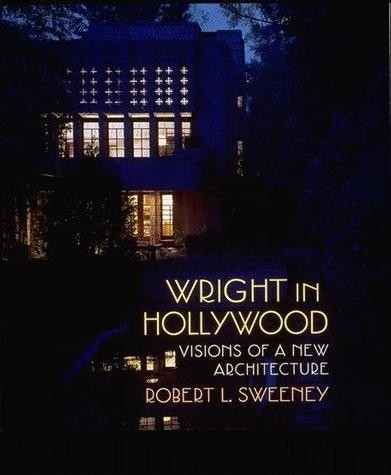Synopsis
Robert Sweeney has meticulously researched the textile block system, providing a case-by-case account of each project, commenting on Wright's clients, collaborators, and contractors, and positioning Wright's experiment firmly within the larger historical context of concrete block technology.
The textile-block system was a fascinating experiment that Frank Lloyd Wright conducted from about 1922 to 1932 as part of his quest to find a new system of construction using a standardized building material based on the idea of twentieth-century machine technology. Robert Sweeney has meticulously researched the textile block system, providing a case-by-case account of each project, commenting on Wright's clients, collaborators, and contractors, and positioning Wright's experiment firmly within the larger historical context of concrete block technology. Sweeney traces the forms of several of the early concrete block projects to Wright's own earlier work, clarifies an array of important technical challenges the architect faced, and notes the numerous block shapes required for executionThe concrete block experiment was firmly rooted in the concept of architectural simplification that Wright established at the outset of his career. It was begun in Hollywood, where he was living at the time, but was part of a larger vision with global application. Wright pursued the concept with a sense of mission, designing approximately thirty projects through the decade. Sweeney shows, however that this technical evolution can be explained in just three designs: the canonical Millard house of February 1923; and in two unexecuted projects, the Community Playhouse, "Little Dipper," for Aline Barnsdall, and in designs for a resort hotel for the Arizona desert.Although Wright began with structure, Sweeney points out that he was primarily interested in form: technology of assembly was only a path to architectural creation. As the structural system matured - a process coinciding with the evolution of the minimalist International Style in Europe - the buildings became increasingly architectonic; forms were simplified, and the initial fascination with ornament all but disappeared.
Robert L. Sweeney is Executive Director of the R. M. Shindler House in Los Angeles. His comprehensive annotated bibliography on Wright was published in 1978.
The textile-block system was a fascinating experiment that Frank Lloyd Wright conducted from about 1922 to 1932 as part of his quest to find a new system of construction using a standardized building material based on the idea of twentieth-century machine technology. Robert Sweeney has meticulously researched the textile block system, providing a case-by-case account of each project, commenting on Wright's clients, collaborators, and contractors, and positioning Wright's experiment firmly within the larger historical context of concrete block technology. Sweeney traces the forms of several of the early concrete block projects to Wright's own earlier work, clarifies an array of important technical challenges the architect faced, and notes the numerous block shapes required for executionThe concrete block experiment was firmly rooted in the concept of architectural simplification that Wright established at the outset of his career. It was begun in Hollywood, where he was living at the time, but was part of a larger vision with global application. Wright pursued the concept with a sense of mission, designing approximately thirty projects through the decade. Sweeney shows, however that this technical evolution can be explained in just three designs: the canonical Millard house of February 1923; and in two unexecuted projects, the Community Playhouse, "Little Dipper," for Aline Barnsdall, and in designs for a resort hotel for the Arizona desert.Although Wright began with structure, Sweeney points out that he was primarily interested in form: technology of assembly was only a path to architectural creation. As the structural system matured - a process coinciding with the evolution of the minimalist International Style in Europe - the buildings became increasingly architectonic; forms were simplified, and the initial fascination with ornament all but disappeared.
Robert L. Sweeney is Executive Director of the R. M. Shindler House in Los Angeles. His comprehensive annotated bibliography on Wright was published in 1978.
Titre original : Wright in Hollywood: Visions of a New Architecture (1994)
Moyenne
-
0 vote
-
1 édition pour ce livre
1994 Editions MIT Press
271 pages
ISBN : 9780262193375
Qui a lu ce livre ?
1 membre a lu ce livre
Aucun membre ne lit ce livre
Aucun membre ne veut lire ce livre
Aucun membre ne possède ce livre
chronique de blog
Aucune chronique de blog pour le moment.
En vous inscrivant à Livraddict, vous pourrez partager vos chroniques de blog !



Pour poster un message, il faut être inscrit sur Livraddict
Aucun commentaire pour le moment.